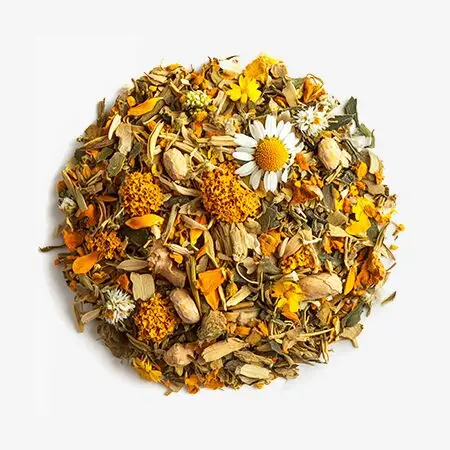
a BRIEF History of Tea, Herbalism, and Plant MEDICINE

In the ancient lands where the whispers of the wind carried the secrets of the earth, there lived a people deeply attuned to the rhythms of nature. These wise ones, the early herbalists, were the keepers of an ancient and sacred knowledge passed down through generations. Their story begins with the birth of herbalism, a practice rooted in the harmony between humans and the natural world.
The Origins of Tea and Herbalism
Long ago, in the verdant hills of ancient China, a curious emperor named Shen Nong discovered the art of tea. Legend has it that while resting under a Camellia sinensis tree, a few leaves drifted into his boiling water. As he sipped the fragrant brew, he felt a sense of clarity and well-being, marking the birth of tea as a beloved elixir. Shen Nong, known as the Divine Farmer, went on to catalog hundreds of medicinal herbs, laying the foundation for traditional Chinese medicine.
Across the oceans, in the misty lands of Europe, the Druids and wise women of the forests practiced their own form of herbalism. They revered plants like sage, mint, and elderberry, using them in rituals and remedies to heal the body and spirit. Each herb had its own story, a unique signature imbued with the essence of the earth and the stars.
The Folklore of Healing Plants
In every corner of the world, folklore blossomed around these healing plants. The Greeks told tales of Chiron the Centaur, a great healer who taught heroes the art of herbal medicine. From his teachings sprang the knowledge of plants like yarrow, which staunched the wounds of warriors, and valerian, which brought restful sleep to troubled minds.
In India, the Vedas sang of the sacred tulsi plant, a divine protector and healer. Tulsi, revered as the Queen of Herbs, was said to embody the goddess Lakshmi and was used to purify the mind, body, and soul. The Ayurvedic tradition, rich with herbs like ashwagandha and turmeric, wove these plants into the very fabric of daily life.
The Science of Herbalism and the Birth of Pharmaceuticals
As centuries passed, the intuitive knowledge of the ancients met the inquisitive spirit of the scientists. The Renaissance brought with it a renewed interest in the natural world. Herbalists like Nicholas Culpeper began to document the medicinal properties of plants, bridging the gap between folklore and science.
The age of enlightenment saw the rise of modern chemistry. Plants were no longer just magical beings; they became sources of powerful compounds that could be isolated and studied. Willow bark, used for centuries to alleviate pain, led to the discovery of salicylic acid, the precursor to aspirin. The foxglove plant, with its striking flowers, revealed digitalis, a life-saving heart medication.
This transition from plant to pill marked the beginning of modern pharmaceuticals. Yet, even as synthetic drugs became the norm, the wisdom of herbalism persisted. Many of today’s medicines still trace their origins to the humble herbs of ancient times.
The Eternal Dance of Nature and Healing
Today, in a world of rapid technological advancement, the art of herbalism remains a vital thread in the tapestry of human healing. The connection between plants and people continues to thrive, nurtured by those who seek a deeper understanding of the natural world.
From the fragrant cups of tea that offer comfort and clarity, to the healing balms and tinctures crafted with love, the legacy of herbalism endures. It reminds us that in every leaf, flower, and root lies the potential for transformation and healing.
As we sip our magical rose tea, we honor the timeless dance between nature and humanity, a dance that has shaped our past and will continue to guide us into the future. Through the whispers of the wind and the songs of the earth, we are reminded that the true magic of herbalism lies not just in the plants themselves, but in our connection to them and to each other.
Subscribe To Our Weekly Newsletter
Share:
Related Posts


a NOURISHING alternative to COFFEE

BIOENERGETIC Hygiene





